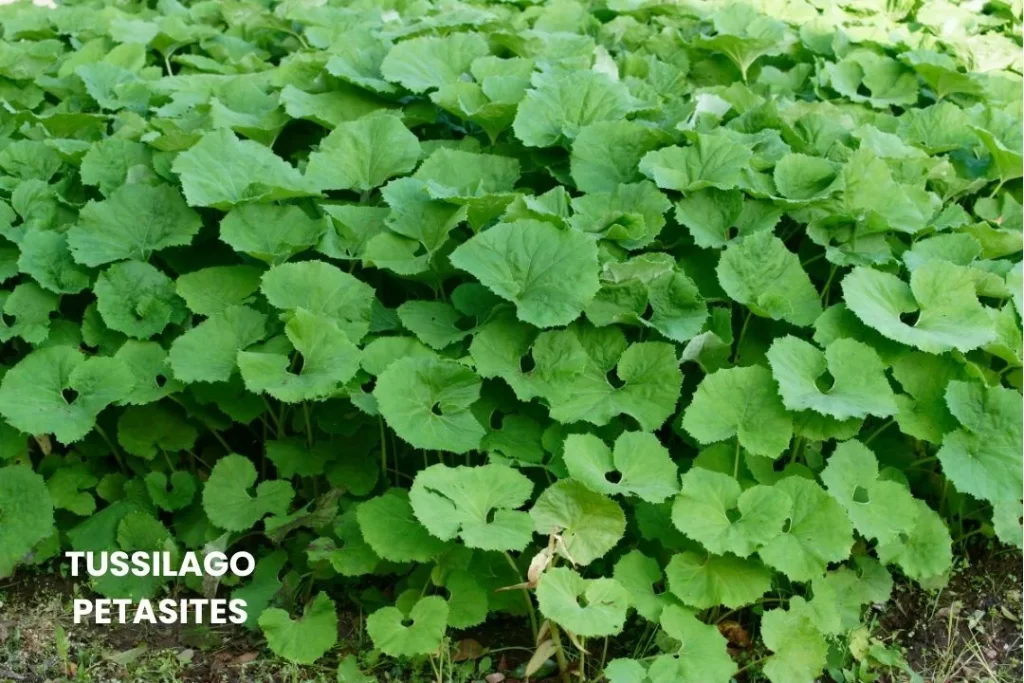Tussilago Petasites, commonly known as Butter-burr, is a homeopathic remedy primarily used for conditions affecting the urinary system and reproductive organs.
It has been found useful in treating ailments like gonorrhoea and conditions involving the urethra and spermatic cord.
This plant is also noted for its role in conditions related to the pylorus (the opening from the stomach into the duodenum).

Table of Contents
ToggleSOURCE INFORMATION
Scientific Classification
- Family: Asteraceae
- Genus: Tussilago
- Common Name: Butter-burr
Butter-burr is a perennial herbaceous plant native to Europe and parts of Asia, known for its broad leaves and its historical use in traditional medicine.
It has been utilized for treating respiratory conditions and urinary disorders, making it a valuable plant in both homeopathic and herbal traditions.
Historical Facts
- Historically, Butter-burr was used in herbal medicine to treat coughs, respiratory conditions, and spasms.
- Its Latin name, Tussilago, comes from the word “tussis,” meaning “cough,” indicating its ancient use as a cough remedy.
- Over time, it has been found to have additional uses in treating gonorrhoea and other urinary tract conditions.
DRUG PATHOGENESIS
- Tussilago Petasites acts on the urinary and reproductive systems, especially in cases involving urethral irritation and infections like gonorrhoea.
- It is also noted for its effects on the pylorus, offering relief in conditions related to this area of the digestive system.
PHYSICAL CONSTITUTION AND DIATHESIS
- Constitution: Best suited for individuals suffering from gonorrhoeal infections, urethral irritation, or conditions involving the pylorus.
- Diathesis: Particularly beneficial for individuals with a tendency toward urinary tract infections and inflammation.
TEMPERAMENT
This remedy is suited for individuals who may experience irritability and discomfort due to urinary or reproductive organ issues, such as gonorrhoeal infections and urethral irritation.
KEY CHARACTERISTICS
- Urinary Tract Irritation: Crawling sensation in the urethra, particularly in cases of urethritis or gonorrhoea.
- Gonorrhoea Symptoms: Yellowish, thick discharge is a characteristic symptom of this remedy.
- Pylorus Affections: Pain or discomfort associated with the pylorus (the lower section of the stomach leading into the small intestine).
- Male Reproductive Symptoms: Urethral crawling sensation accompanied by erections, and pain in the spermatic cord.
DETAILED ORGAN SYMPTOMS
URINARY SYSTEM
- Crawling Sensation in Urethra: This is a distinctive symptom in individuals with urethral irritation or infection.
- Gonorrhoea: Yellowish, thick discharge from the urethra, typically seen in cases of gonorrhoeal infections.
MALE REPRODUCTIVE SYSTEM
- Erections with Urethral Crawling: A common symptom in individuals experiencing urethral irritation alongside sexual arousal.
- Pain in the Spermatic Cord: This symptom may occur in association with urethral infections or inflammation in the reproductive tract.
- Pain in the Pylorus Region: Indicating issues with the lower part of the stomach, possibly related to digestion or gastric inflammation.
MODALITIES
- Worse: Symptoms may worsen after sexual arousal or physical exertion.
- Better: Relief may be found after rest or applying gentle pressure to the affected areas.
WHAT ARE MODALITIES IN HOMOEOPATHY?
RELATIONSHIP WITH OTHER DRUGS
Compare With,
- Tussilago Fragrans: Used for conditions affecting the pylorus, and in individuals with a tendency toward corpulency (obesity).
- Tussilago Farfara: Commonly used in cases of coughs and respiratory ailments.
- Tuberculinum: Sometimes used as an intercurrent remedy in cases of phthisis pulmonalis (pulmonary tuberculosis).
DOSE
- The recommended dosage is typically in the tincture form, administered as per the individual’s response and severity of symptoms.
- A homeopathic practitioner would adjust the dose according to the patient’s specific needs.
Frequently Asked Questions
What is Tussilago Petasites used for?
- Tussilago Petasites is primarily used for treating gonorrhoea, urethral irritation, and affections of the pylorus.
- It can alleviate symptoms like yellowish discharge, crawling sensations in the urethra, and discomfort in the spermatic cord.
How does Tussilago Petasites work?
- In homeopathy, Tussilago Petasites works by addressing the specific symptoms of urinary and reproductive organ irritation, particularly in cases of infection or inflammation like gonorrhoea.
What dose of Tussilago Petasites should I take?
- The dose is typically given in the form of tincture, though specific potencies may vary depending on the individual’s condition.
- It is advisable to consult a homeopathic practitioner for guidance on dosage.
Are there any side effects of Tussilago Petasites?
- When used in recommended potencies or tinctures, Tussilago Petasites is considered safe.
- However, it is important to consult with a healthcare professional or homeopath for proper dosing and monitoring.
Meaning of Difficult Words
- Gonorrhoea: A sexually transmitted infection that causes inflammation of the genital mucous membrane.
- Urethra: The tube that carries urine from the bladder to the outside of the body.
- Pylorus: The opening from the stomach into the duodenum (the first part of the small intestine).
- Spermatic Cord: A cord-like structure in males that runs from the abdomen down to each testicle and contains blood vessels, nerves, and the vas deferens.
